Last Updated on July 15, 2025 by Ewen Finser
Shipping is no longer a back-office chore. It’s a strategic lever that can either erode your margins or fuel your growth. Ninety-five percent of customers say delivery experience influences their perception of a brand. High shipping costs drive 69 percent of cart abandonments, and poor tracking ends in endless “Where’s my order?” (WISMO) tickets. In a marketplace where margins are razor-thin and customer loyalty is hard-won, shipping transforms into a make-or-break factor for conversion, retention, and profitability.
For many Shopify merchants, the platform’s built-in tools suffice during the earliest days of operation—when you’re fulfilling a handful of weekly orders from your garage. But once you cross daily volumes of fifty orders, introduce multi-destination fulfillment or experiment with flash sales and subscription boxes, that is not enough. Manual label printing, one-carrier rate selection, clumsy returns, and generic tracking pages become unsustainable. The solutions are applications designed to automate repetitive tasks, unlock institutional carrier discounts, and compose polished post-purchase experiences under your own brand.
Why Shopify’s Built-in Shipping Tools Only Get You Started
Shopify’s built-in shipping features are intuitive. You assign shipping zones, choose between flat rates or real-time carrier quotes, print labels from the admin console, and offer rudimentary order tracking. This streamlined setup works beautifully if your operation is small, your destinations limited, and your shipping logic straightforward.
But simplicity comes at the expense of flexibility. Imagine a flash sale where you need to batch-print two hundred labels before 8 a.m. or an expanding European customer base that demands delivery to neighborhood service points rather than default home addresses. Or a subscription box business where certain SKUs require signature confirmation and temperature-controlled packaging. In each scenario, built-in tools require manual workarounds: CSV exports, third-party scripts or even copy-and-paste label creation. And every manual step during peaks is increasing error rates and ballooning labor costs.
International shipping compounds the complexity. While Shopify can collect basic customs information, you’re still responsible for generating commercial invoices, identifying harmonization codes, and ensuring duties and taxes are accurately calculated. Any misstep can trigger held goods at customs, surprise fees for the end customer, and a cascade of support tickets. Meanwhile, your brand’s tracking experience remains hostage to the carrier’s generic page, eroding the trust you earned at checkout. And if a customer wants to return a purchase? They email you, you dig up a PDF return form, they print it, slap it on a box—but who’s tracking that return? That entire cycle feels archaic to modern shoppers.
At this point, manually managing shipping isn’t just inefficient; it becomes a strategic liability. Specialized shipping apps automate these workflows, stitch multiple carriers into one dashboard, and wrap every tracking page, notification, and return label in your brand’s identity. When you eliminate friction, you reduce cart abandonment, shrink support costs, and free your team to focus on scaling product development and marketing.
What To Consider When Picking Your Shipping App

Before you start comparing features, get crystal clear on your requirements. A methodical selection process prevents costly migrations down the road.
First, forecast your shipping volume for the next twelve to eighteen months. Applications often advertise “free” or “low-cost” tiers for limited labels, but costs and complexity can spike once you exceed those thresholds. If you anticipate growth—through expanded SKUs, new sales channels, or international markets—choose a solution whose premium tier still offers cost-effective automation at scale.
Next, define your geographic focus. Domestic-only merchants might prioritize deep USPS and UPS integrations, expedited services, and weekend delivery options. Cross-border sellers require automated customs paperwork, duty and tax calculators, and Delivered Duty Paid (DDP) capabilities so customers aren’t surprised by additional fees upon delivery. A misaligned app here leads to unexpected labor spending and abandoned international carts.
Carrier diversity is a third dimension. Relying solely on the cheapest national carriers can leave gaps in speed or coverage. The best shipping apps integrate both core global players—USPS, UPS, FedEx, DHL—and niche regional couriers in Europe, Asia, or Latin America. That allows you to choose a perfect price-speed trade-off on every single order.
Automation features deserve a close look. Can the app batch-print hundreds of labels without a CSV export? Does it let you define shipping rules—assigning carriers based on order weight, destination zone, or product type? Can it automatically generate commercial invoices for all international shipments? Each manual workaround you eliminate translates directly to labor savings and fewer fulfillment mistakes.
Finally, don’t overlook customer experience. Branded tracking pages, SMS and email notifications at every transit milestone, accurate estimated delivery dates displayed at checkout and in account portals—all these things reinforce trust and reduce support inquiries. If a return is needed, a self-service portal with one-click label generation feels seamless to customers and cuts support overhead.
Use these criteria for your evaluation. Score each provider—not on marketing hype but on how well it meets your specific shipping profile. That way, you avoid feature overload and choose the app that aligns with your unique growth plan.
1. Shippo: The Balanced Solution for Small-to-Mid-Sized Stores
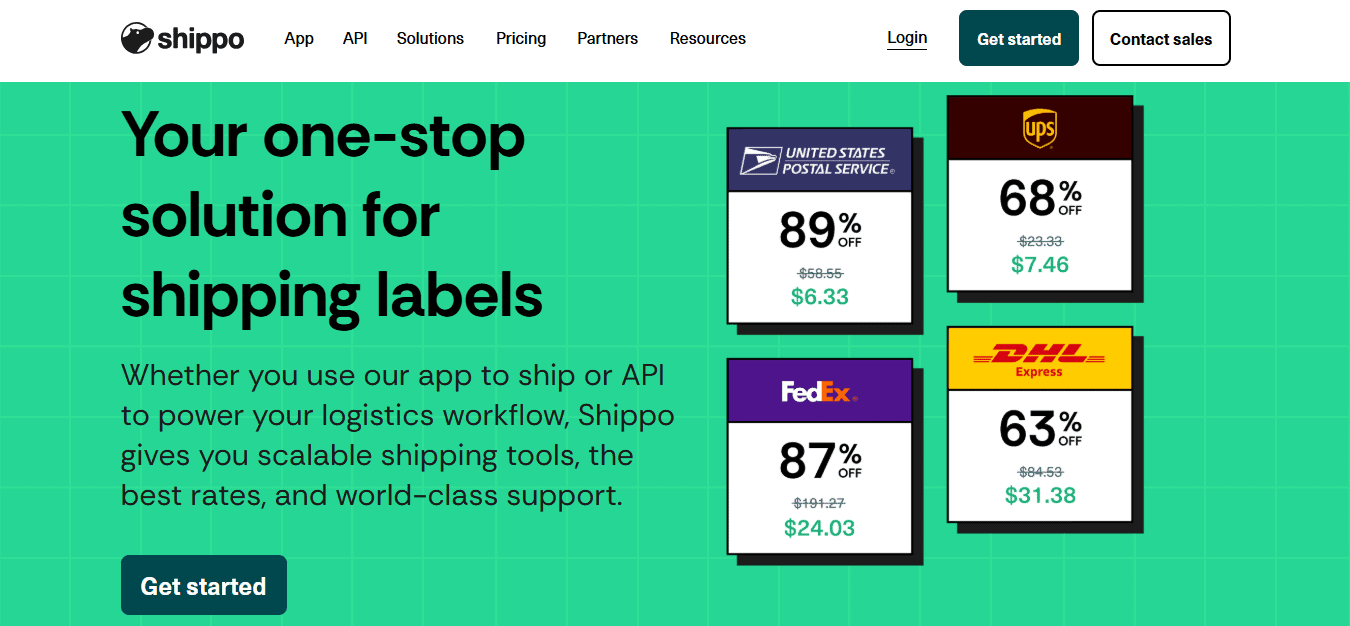
Shippo earns its reputation as the “bread-and-butter” shipping app for Shopify merchants who need an intuitive interface, reliable automation, and access to institutional-grade discounts. You connect Shippo to your Shopify store in minutes, and orders flow directly into its dashboard. From there, you can compare live rates across more than forty carriers—USPS, UPS, FedEx, DHL, but also regional players like Purolator in Canada or Sendle in Australia.
Label creation is a single click. Shippo automatically populates all the address and product data, generates the label, and embeds customs documents for international orders. Need to print fifty labels at once? The batch-print feature handles it. Want to restrict a specific product to Monday delivery only? A simple shipping rule covers that scenario, automatically routing orders via UPS Ground on that day.
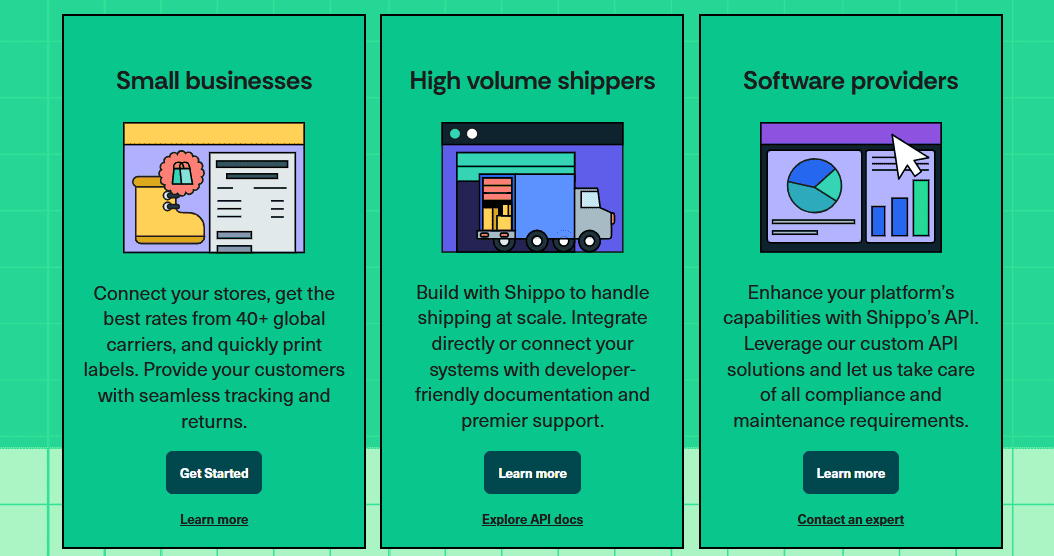
Under the hood, Shippo pools shipping volume from thousands of merchants to unlock discounts typically reserved for enterprise shipping departments. Even if you ship only ten packages a week, you can still access savings of up to 90 percent off retail rates. Because Shippo supports connecting your own negotiated carrier accounts, you never lose out if you already have a corporate UPS or DHL contract.
On the post-purchase front, Shippo wraps every tracking link with your logo, brand colors, and custom messaging. Automated email and SMS notifications keep customers apprised of every milestone—pickup, in transit, out for delivery—eliminating a flood of support tickets. Should a return be requested, the same dashboard creates return labels in seconds and lets customers handle the process themselves through a branded portal.
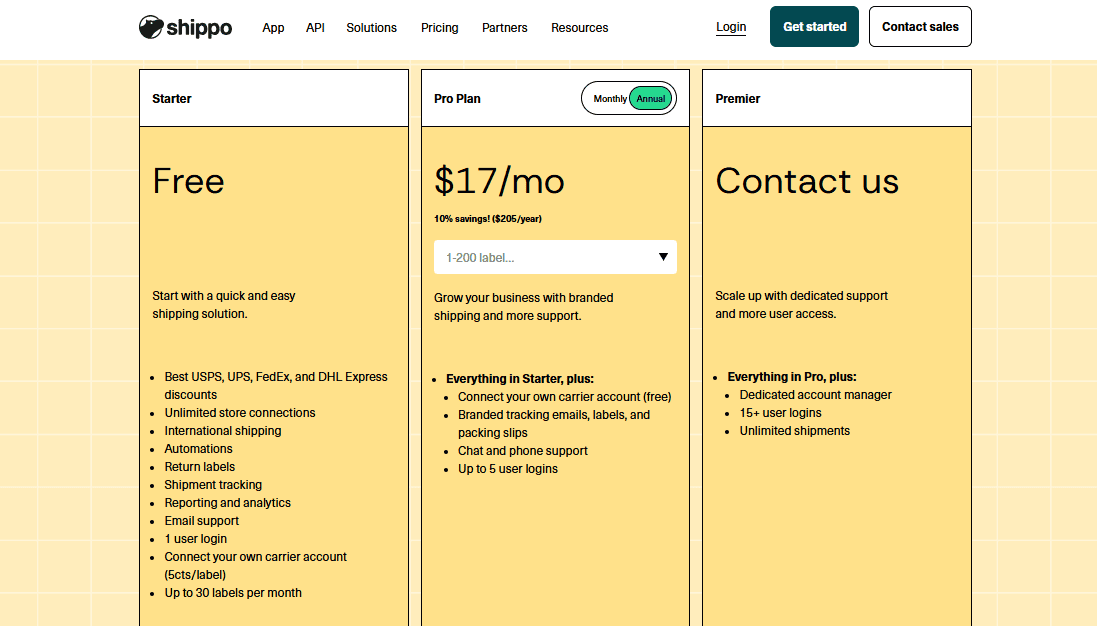
Shippo’s free tier supports up to 30 labels per month, making it accessible to tiny startups. As you grow, paid plans from $19 to $199 per month unlock expanded label counts, phone support, advanced shipping rules, and greater API access. Overall, Shippo strikes a rare balance between ease of use, cost transparency, and powerful automation—exactly why it sits at the top of many Shopify merchants’ wish lists.
2. Easyship: The Cross-Border Solution For Global Fulfillment
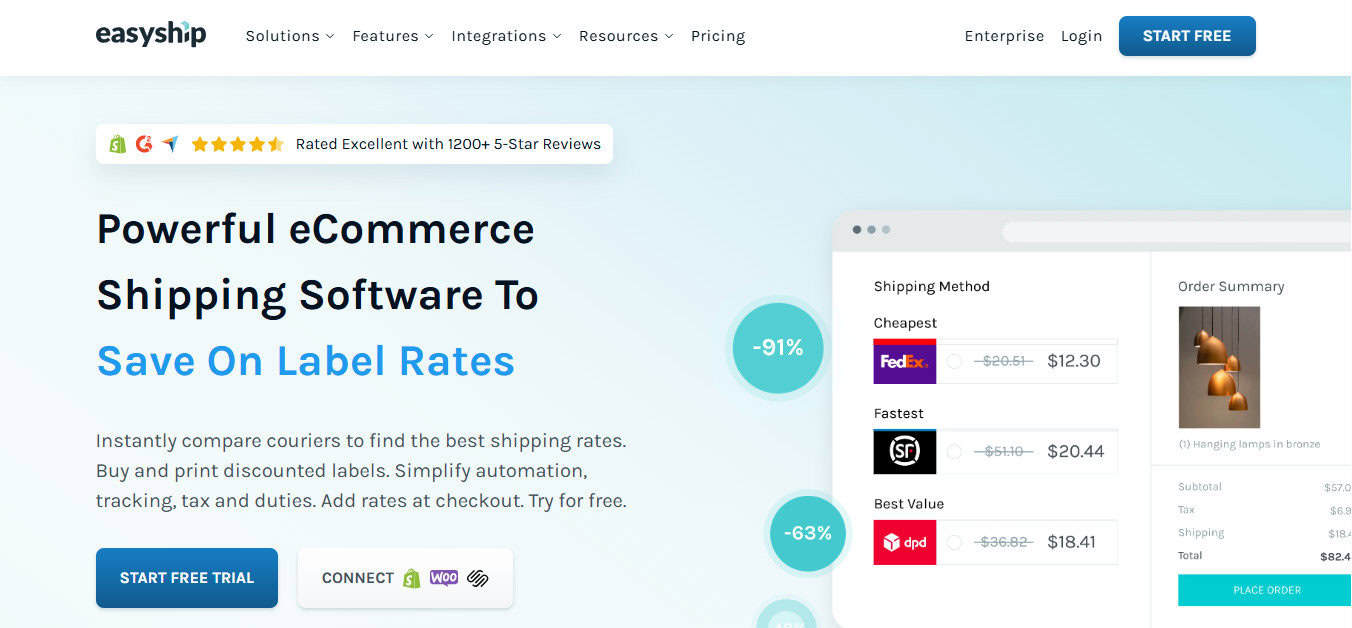
If your ambitions stretch beyond domestic borders, Easyship transforms complex international logistics into a near-effortless process. At its core, Easyship provides a unified portal for more than 250 carriers, including niche last-mile partners across every continent. That carrier diversity means you can dynamically choose to show customers their best options—cheapest, fastest, or most reliable—complete with landed cost calculators that bundle duties and taxes into the checkout price.
What sets Easyship apart is its end-to-end handling of customs compliance. The app automatically populates commercial invoices, harmonization codes, and any required export declarations. You choose between Delivered Duty Unpaid (DDU) or Delivered Duty Paid (DDP) models. In the DDP scenario, Easyship tallies local taxes and duties upfront, collects them at purchase, and remits them to customs on your behalf. That delivers a frictionless experience to your international customers, who otherwise might balk at unexpected import fees.
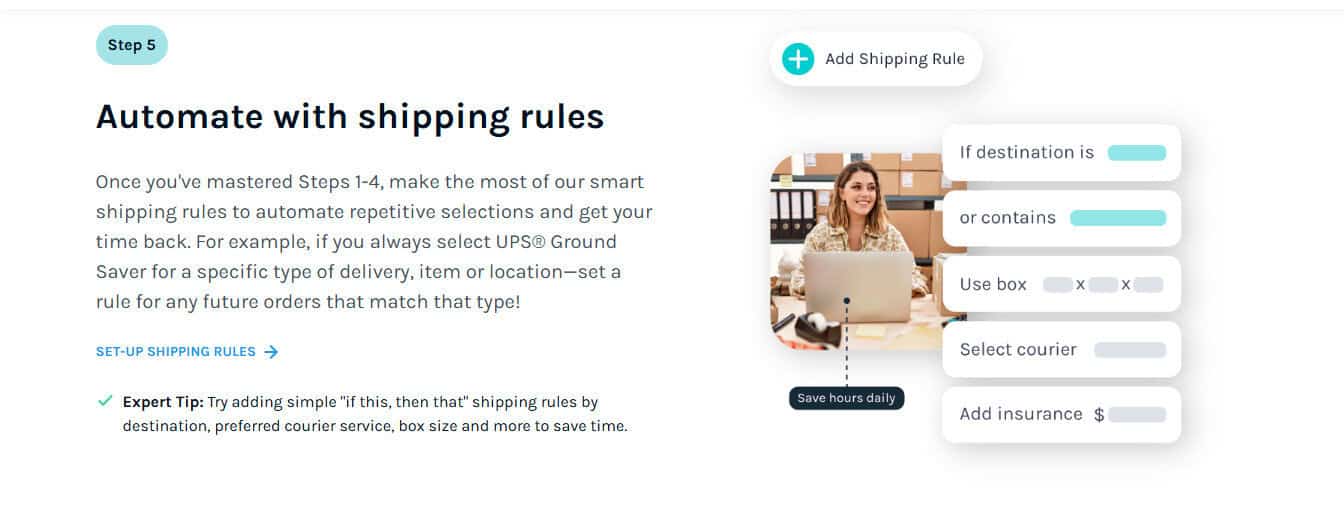
Easyship also offers advanced packaging logic. You can establish rules that optimize box dimensions for mixed-item orders to minimize dimensional weight charges. If a package exceeds certain weight thresholds, Easyship routes it to a different carrier or service level to balance cost and speed. For subscription-box merchants, you can define per-item rules—temperature-controlled packaging for cosmetics, signature confirmation for high-value electronics—ensuring compliance without manual intervention.
Post-purchase, Easyship extends branded tracking pages across multiple languages. It integrates with major email and SMS platforms so you can craft personalized, automated notifications. On the returns side, Easyship’s self-service portal lets customers initiate returns based on predefined rules—free or paid, in-store or drop-off—while automatically generating the appropriate label.
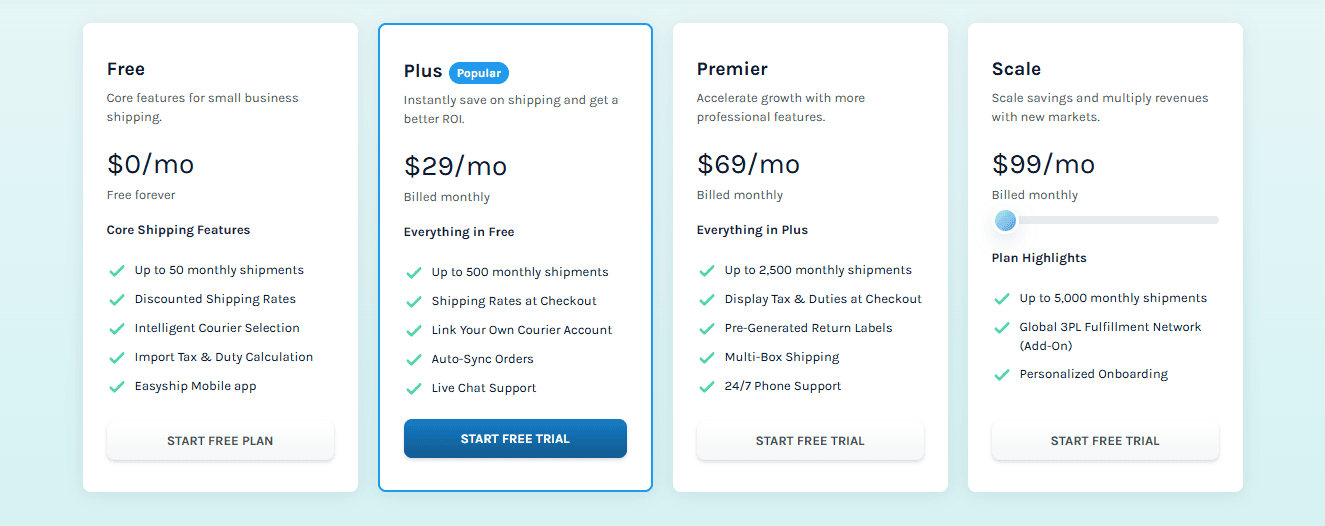
Despite its power, Easyship maintains an approachable interface. A free plan covers up to 50 shipments a month. Paid tiers from $29 to $99 per month unlock higher volumes, premium support, and custom SLAs. If global growth is central to your strategy, Easyship bridges the gap between local brand intimacy and global operational complexity.
3. ShipStation: The Automation Solution For Multi-Channel Stores
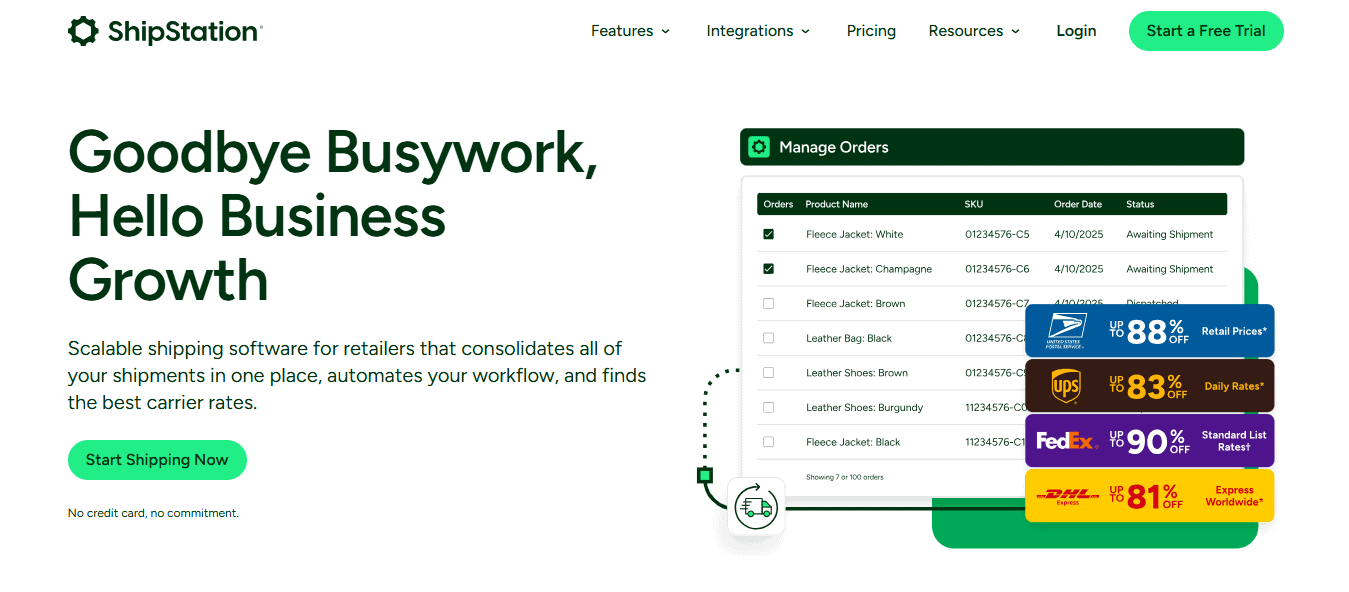
ShipStation has carved out a niche among high-velocity merchants who sell across multiple channels—Shopify, Amazon, eBay, Walmart, and more. Its strength lies in mature, enterprise-grade automation that can route tens of thousands of orders every day without breaking a sweat.
From one central dashboard, ShipStation aggregates all incoming orders, regardless of sales channel. Its rule engine allows you to specify exactly how each order should be fulfilled: by weight, by destination, by product SKU, or by channel. Want all Amazon orders under two pounds to ship via USPS First-Class? No problem. Want to escalate any order over $200 in value to require signature confirmation? Just add a rule.
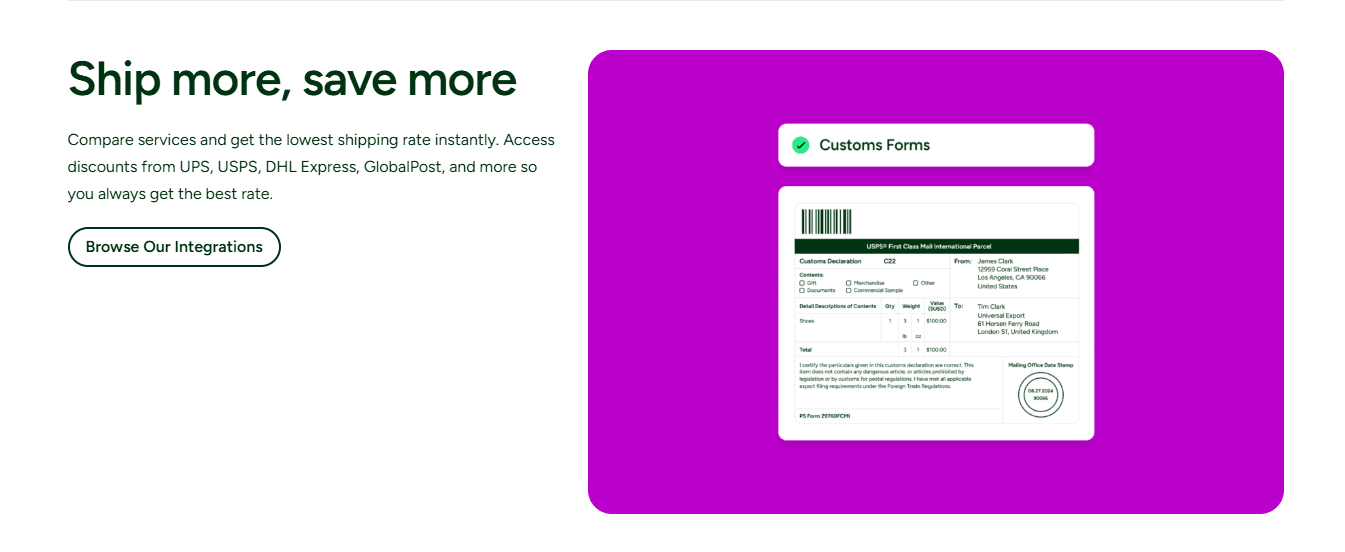
Batch processing capabilities are industry-leading. You can filter, sort, and print hundreds—or even thousands—of labels in a few clicks. ShipStation also orchestrates pick-and-pack workflows: print pick lists, scan items, confirm quantities, and then generate shipping labels in sequence. For subscription-box services with recurring shipments, you can clone and schedule shipments to recur weekly or monthly, slashing the manual overhead to almost zero.
International shipments benefit from automatic customs form creation, including harmonization codes and commercial invoices. ShipStation integrates with duty and tax calculators so you can preview landed costs and decide whether to ship DDU or DDP. Branded tracking notifications ensure every customer interaction remains under your own brand umbrella.
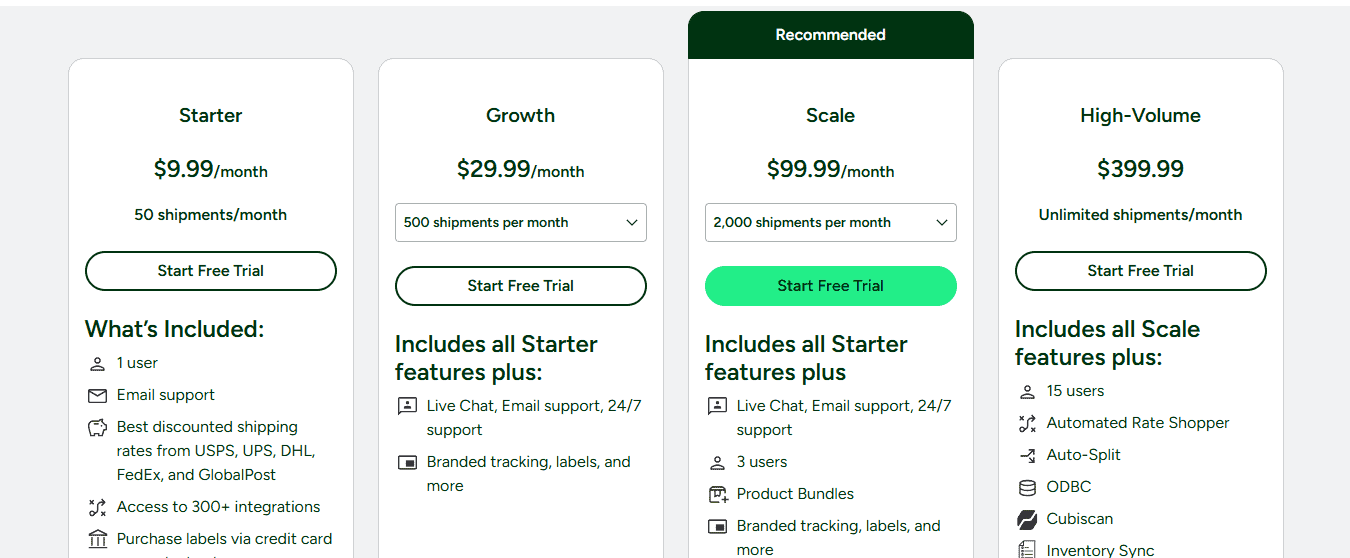
ShipStation’s pricing starts at $9.99 per month for up to 50 shipments and scales to enterprise levels at $159 per month for 10,000 shipments—each tier unlocking deeper discounts and faster support SLAs. While its interface can feel dense at first, you quickly appreciate the breadth of controls it provides. For any merchant processing more than a few hundred orders a month across multiple storefronts, ShipStation offers the automation backbone required to grow without adding headcount.
4. AfterShip: When Tracking Is Important
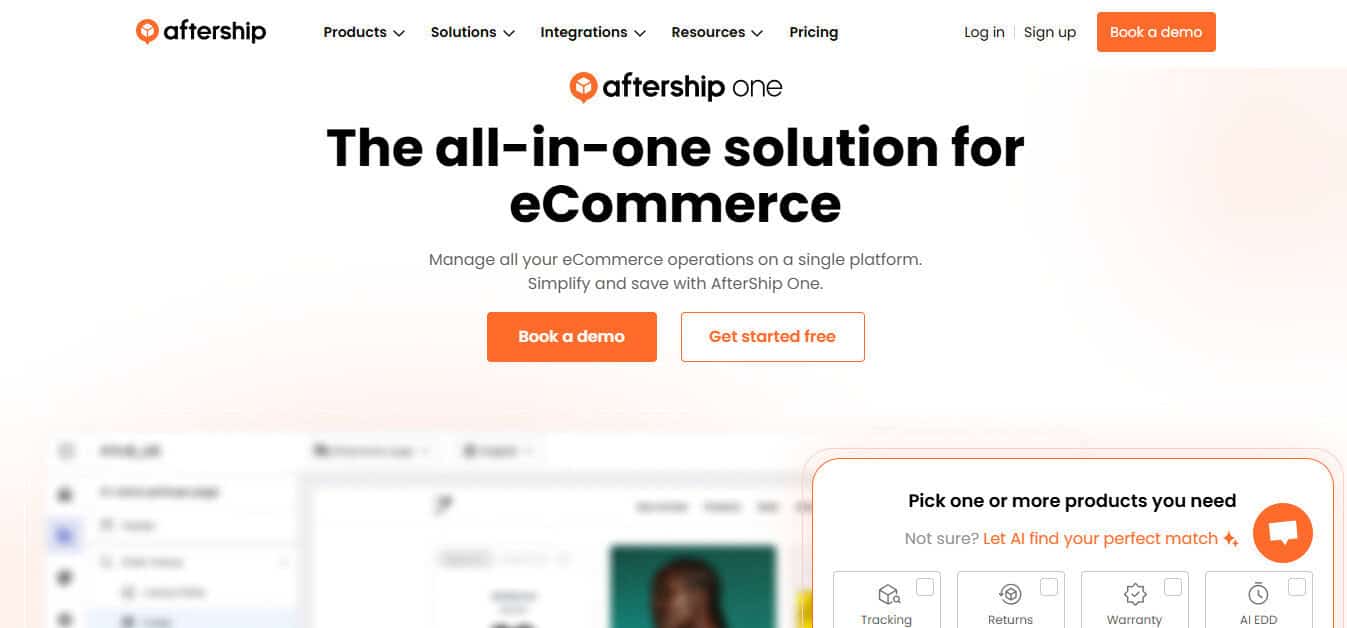
AfterShip stands apart by focusing squarely on the post-purchase journey. While it does offer label generation and basic carrier rate shopping, its core value lies in turning routine tracking updates into brand-building moments and marketing opportunities.
Once you connect AfterShip to your Shopify store, every shipment across 1,100-plus carriers funnels into its centralized tracking hub. You can customize the tracking page with your logo, product recommendations, promotional banners, or social proof to drive additional revenue after checkout. Automated email and SMS notifications are triggered by carrier scan events—everything from “Order Processed” to “Arriving Tomorrow”—cutting down “Where’s my order?” support volume by as much as 40 percent.
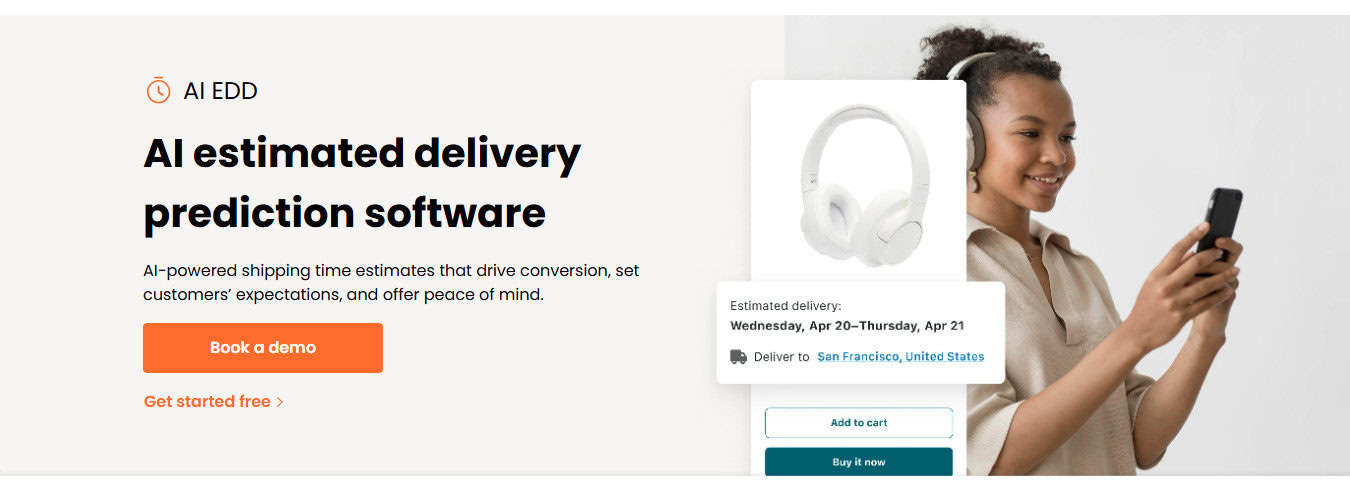
AfterShip’s AI-powered Estimated Delivery Date (EDD) feature analyzes historical carrier performance to provide more accurate delivery windows than standard carrier estimates. That accuracy improves customer satisfaction and avoids the frustration of missed delivery promises. A self-service returns portal lets customers initiate returns under your own branding, with rules you define—free returns on orders over a threshold, charge return shipping for just certain SKUs, and so on.
Beyond tracking and returns, AfterShip dashboards deliver analytics on delivery performance, carrier reliability, and return reasons. That data feeds back into your fulfillment strategy—maybe you shift a high-value customer’s region from USPS to FedEx after noticing late scans, or remove a problematic carrier from your checkout options.
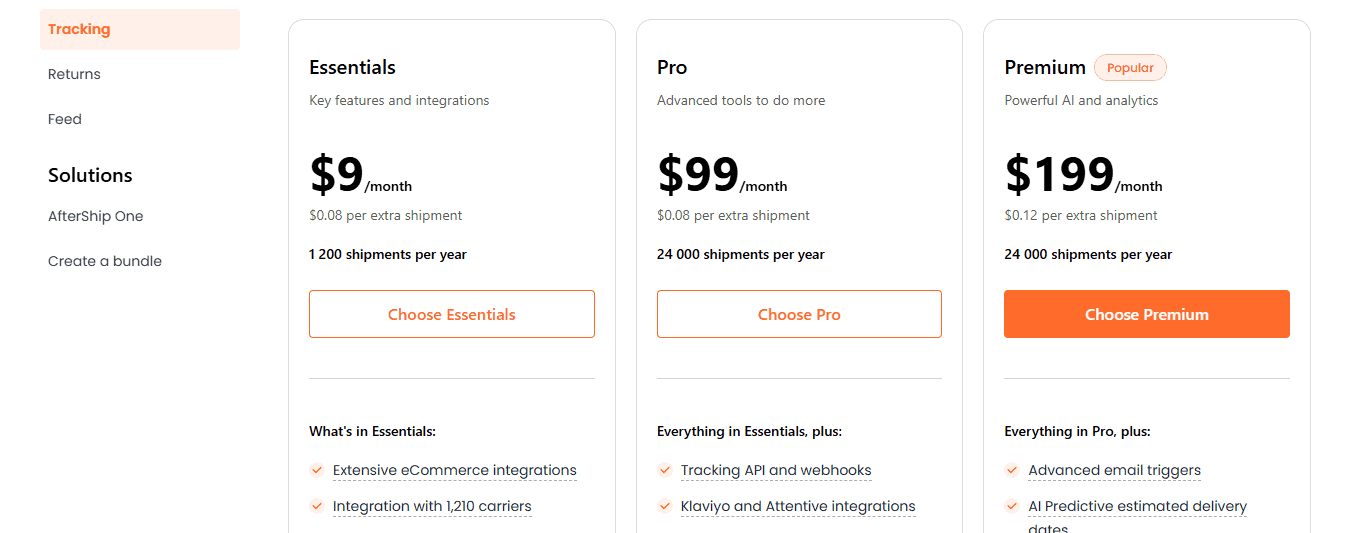
AfterShip’s free tier covers 50 shipments monthly, while paid plans starting at $11 per month unlock deeper analytics, integrations with Klaviyo and Zendesk, and branded domains. For any merchant who sees shipping notifications as more than logistics—viewing them instead as relationship-building opportunities—AfterShip provides the specialized toolkit needed to engage customers beyond the shopping cart.
5. Sendcloud: The European Specialist with Best-In-Class Returns
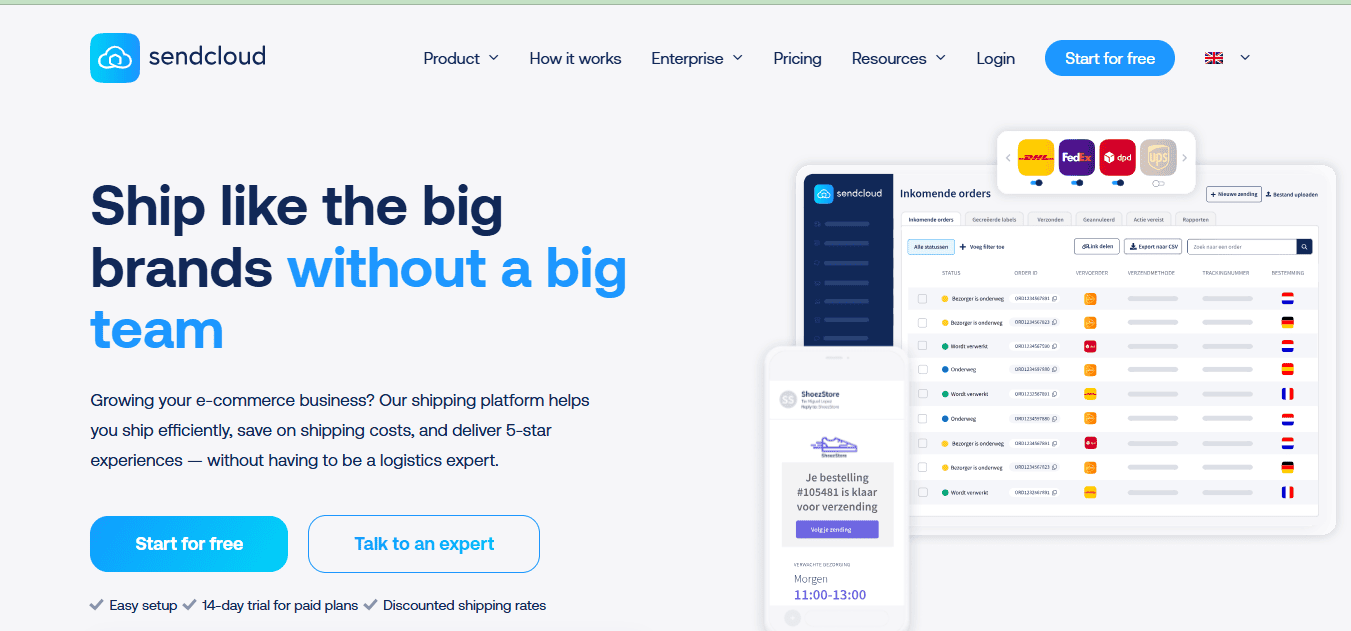
Sendcloud has made its mark across Europe by delivering a turnkey shipping and returns platform tailored to local markets. It integrates with over 100 carriers—regional giants like PostNL, DPD, GLS, as well as global operators—and offers delivery options at checkout that rival Amazon’s own UX: service-point pickup, nominated-day delivery, and real-time cost comparisons.
Its returns management is a standout. Customers access a multilingual, self-service portal where they select items to return, choose drop-off locations, and print labels on demand. You define rules that determine if returns are free, chargeable, or require store credit. Those workflows automatically synchronize back to Shopify, updating order statuses without manual intervention.
Behind the scenes, Sendcloud’s rules engine automates carrier assignment based on each order’s characteristics—destination country, package weight, declared value, or shipping speed preference. Batch label creation, consolidated manifests, and pick list printing transform fulfillment from a tedious task into a streamlined rhythm. Detailed analytics let you pinpoint slow regions, high-cost lanes, and patterns in return reasons.
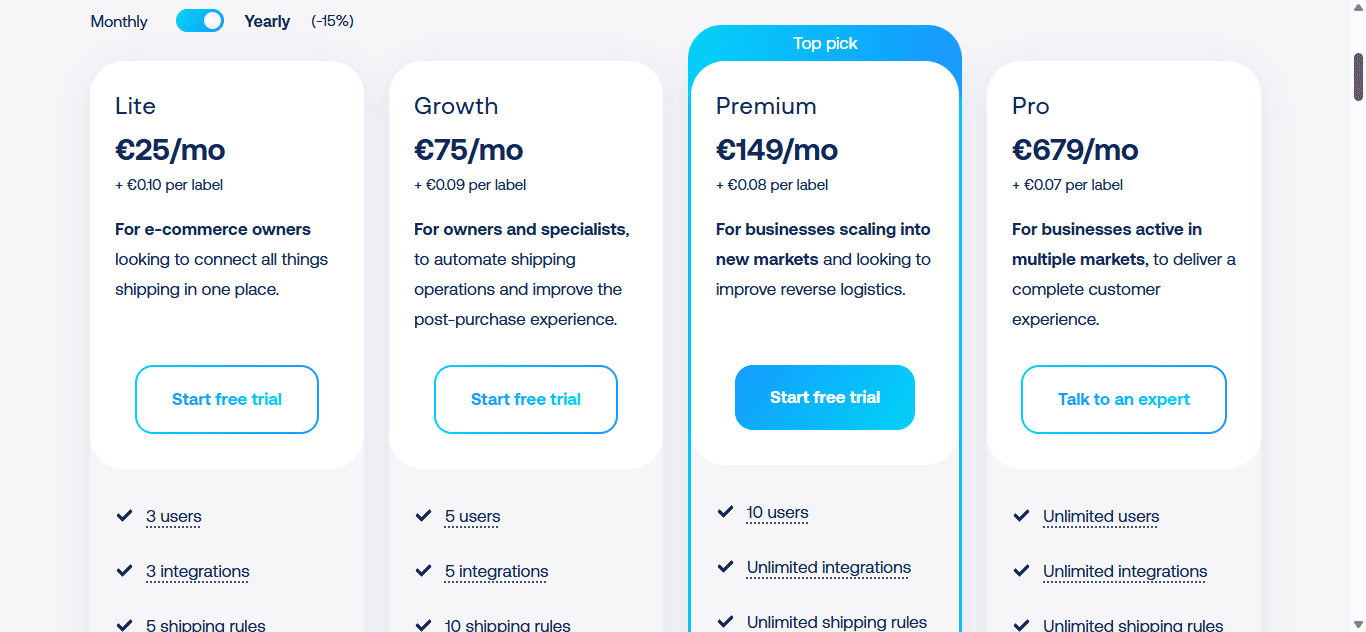
Sendcloud’s pricing begins with a free plan that includes pre-negotiated rates and basic tracking. Paid tiers from €29 to €175 per month unlock white-label tracking pages, chat support, custom workflows, and dedicated account management. If your Shopify store’s footprint is primarily European, Sendcloud delivers the local expertise, carrier breadth, and advanced returns workflows needed to compete at scale.
6. ShippingEasy: U.S.-Centric Shipping
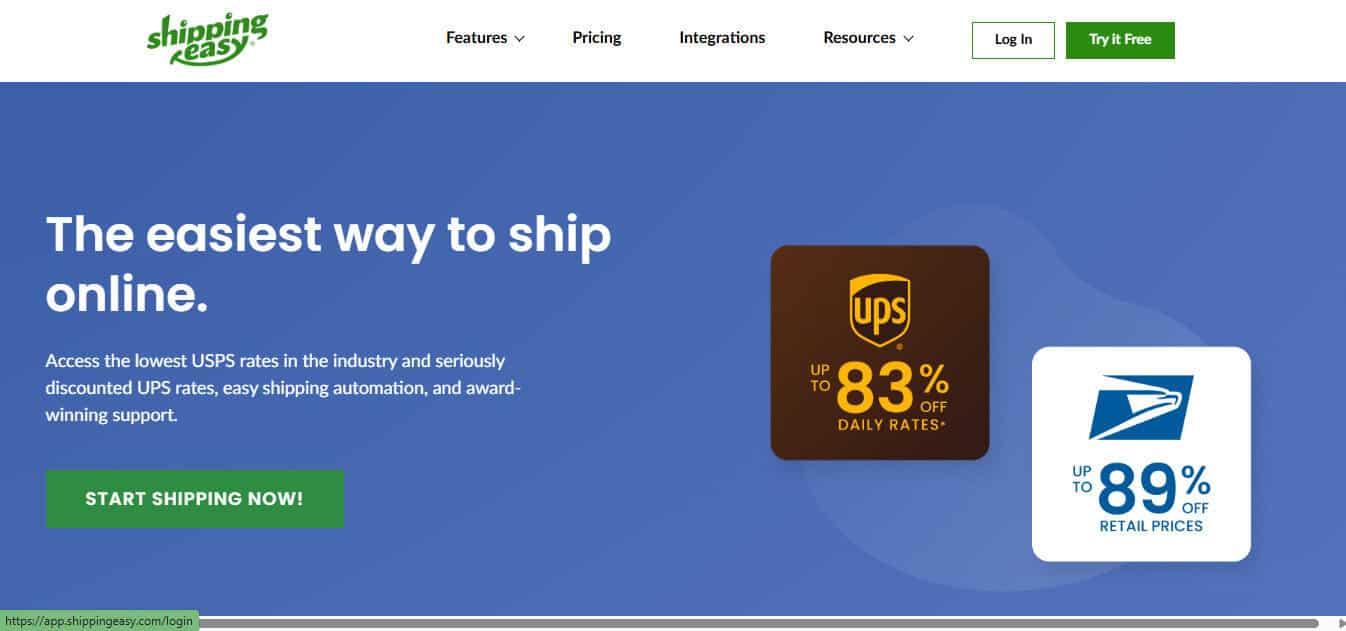
ShippingEasy blends discounted USPS and UPS postage with embedded email marketing tools—an unusual but powerful combination for U.S.-based merchants who want to pair shipping efficiency with customer re-engagement campaigns. You connect all your channels—Shopify, Amazon, eBay, Etsy—and ShippingEasy centralizes orders in one interface. Pre-negotiated rates with USPS and UPS deliver savings, while automation rules assign carriers and service levels based on order attributes.

What differentiates ShippingEasy is its native marketing module. After an order ships, you can trigger automated emails inviting customers to leave reviews, refer friends, or explore complementary products—turning shipping notifications into profitable touchpoints. Inventory sync ensures you never oversell, and returns are handled via auto-generated labels linked in customer emails.
The interface guides you through setting up automation templates and marketing workflows in tandem with shipping rules—streamlining two critical growth channels in one platform. Reporting dashboards tie shipping spend to order value and marketing performance, giving you a unified view of ROI.
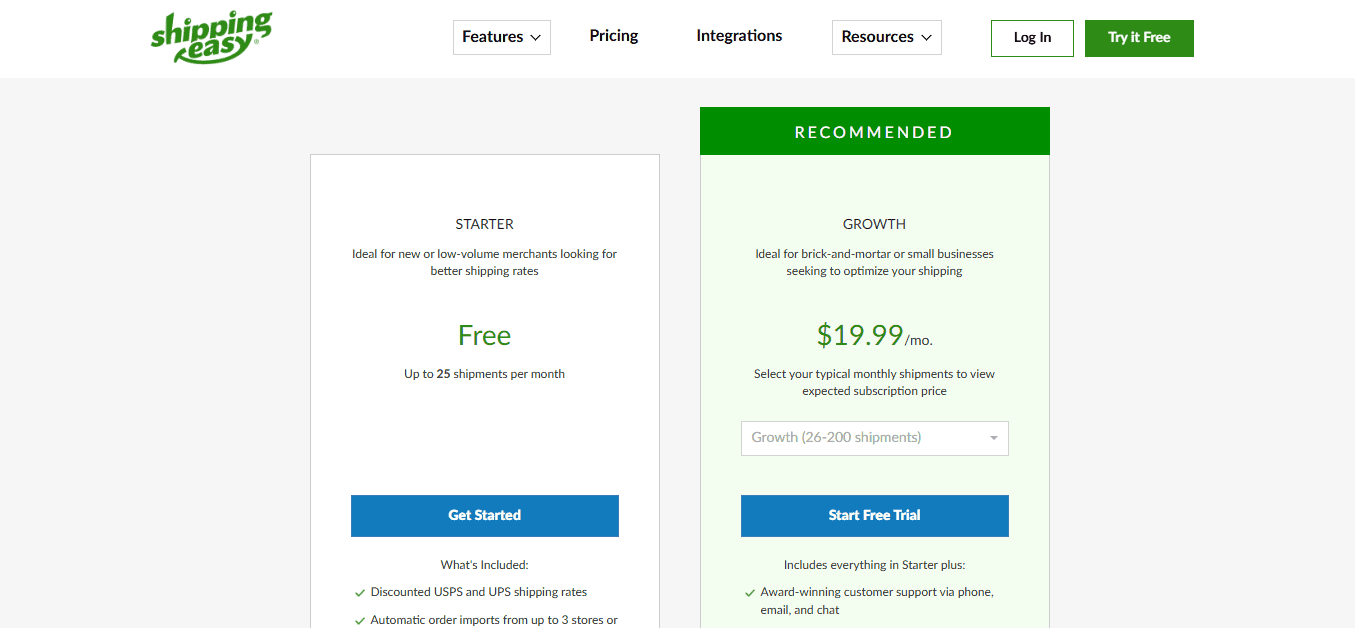
ShippingEasy’s free tier supports 25 shipments per month, while paid plans from $19.99 to $49.99 per month elevate label counts to 1,500 and unlock advanced templates, multi-user logins, and priority support. For U.S. merchants who rely heavily on USPS/UPS and want to weave shipping and email marketing into a single process, ShippingEasy is an elegant, cost-effective solution.
Conclusion: Elevate Shipping from Cost Center to Competitive Advantage
Every unoptimized shipping workflow quietly chips away at your margins, your team’s time, and your customers’ trust. Throughout this guide, we’ve shown how specialized shipping apps turn fulfillment from a tangle of manual tasks into a streamlined, brand-building engine—whether it’s Easyship’s global customs wizardry, ShipStation’s rule-driven multi-channel might, AfterShip’s post-purchase engagement magic, Sendcloud’s European delivery finesse, or ShippingEasy’s smart blend of USPS/UPS savings with marketing outreach.
Make no mistake: each of these solutions excels in its niche. But for most Shopify merchants—especially those balancing domestic growth with growing international ambitions—Shippo hits the sweet spot. You get instant access to deeply discounted rates across 40+ carriers, one-click label creation and batch printing, automated customs documentation, and fully branded tracking and returns portals. Its free starter plan lets you test those capabilities risk-free, then scale into paid tiers that keep pace with your volume without hidden fees or complexity creep.
In short, if you want a single app that combines carrier diversity, automation, and a polished customer experience—all wrapped in an intuitive interface—Shippo is the best overall choice. Embrace it, and you’ll watch shipping transform from a back-office burden into one of your most potent levers for e-commerce growth.

